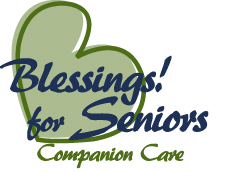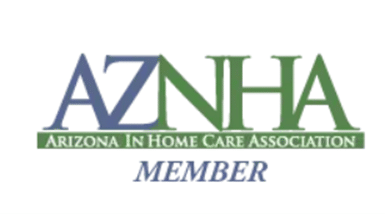The total veteran population in the United States has reached nearly 23 million, with almost 40 percent of those over the age of 65 (www.va.gov, 2011). When compared to every other country in the world, the United States offers the most comprehensive benefits system for assisting veterans, yet only about 36 percent of veterans receive Veterans Affairs (VA) benefits and services according to the most recent survey done in 2008. Of that group, 32 percent receive service from more than one VA program and 68 percent receive one service (www.va.gov, 2011).
In response to the growing senior veteran population, the Department of Veterans Affairs has developed a comprehensive benefits program. The VA health care system has grown exponentially and now boasts 798 VA community-based outpatient clinics, 152 VA hospitals, 131 VA national cemeteries, and 57 regional offices (www.va.gov, 2011). In addition to health care, the VA benefit system provides support for veterans to obtain medical and long-term care, disability pension, life insurance, home loans, vocational rehabilitation, employment, and more.
Understanding VA Medical Benefits
Acceptance to the VA medical benefits program is based on a number of factors: the nature of discharge from military service; length of service; if disabilities are service-related (either incurred or aggravated while on active duty in the military and in the line of duty); income level; and available VA resources.
To be eligible for VA medical benefits, veterans must be enrolled in each state’s VA health system. Veterans are assigned a priority level from 1-8, with 1 being the highest priority. The priority level is determined by a veteran’s disability rating (service and non-service connected); income; assets; and overall financial capability. The higher levels will be required to pay a co-pay. Some areas have restricted higher-level enrollment.
The standard medical benefits package covers preventative care services, outpatient and inpatient diagnostic and treatment services, prescriptions, and long-term care. Those with a service connected disability rating are given first priority access to available services.
All enrolled veterans are entitled these services as well:
- Geriatric evaluation – an inpatient or outpatient evaluation of the veteran’s ability to care for himself/herself.
- Adult day health care – a therapeutic day care program that provides medical and rehabilitation services.
- Respite care – allows caregivers a break for either inpatient or outpatient supportive care.
- Home Healthcare & Homecare – nursing, physical therapy, tele-monitoring, bathing assistance and homemaker services provided in the veteran’s own home.
- Hospice/palliative care – provides support for terminally ill veterans and their families.
- Complete healthcare – physicians care, labs, testing, hospital care, prescriptions, durable medical equipment, prosthesis and long term care. Long term care is usually reserved for service connected disabled.
- Hearing aids, eyeglasses and dental care.
Getting support with monthly disability compensation
If veterans are eligible, opportunity for monthly financial relief exists through a few different programs. Each with its own purpose and list of requirements, these programs support veterans who are physically disabled and who have little or no income.
Compensation
Service connected disability compensation is paid to those who were injured during service; whose condition was exaggerated by service; who were exposed to high noise levels resulting in hearing loss; who were exposed to mesothelioma and agent orange; who are experiencing post- traumatic stress; and more.
Pension
The pension is available whether the disability is related to service or not and is paid to disabled veterans who have limited or no income. Surviving spouses and children are also eligible. Eligibility is based on these requirements:
- The veteran must not have been dishonorably discharged.
- If the veteran enlisted before September 7, 1980, the veteran must have served 90 days or more of active duty with at least one day during a period of war. Anyone who enlisted after September 7, 1980, must serve at least 24 months or the full period for which he was called to serve.
- The veteran must be permanently and totally disabled, or age 65 or older.
- If disabled, a letter from your doctor is needed to prove disability status.
Aid and Attendance pension
Aid and Attendance benefits are paid in addition to disability pensions. They are tax-free and paid to the veteran and/or his spouse or widow, for life. Eligibility for Aid and Attendance pension is based on criteria for service and medical, income, and expense qualifications. A veteran, or their spouse or widow, is eligible for Aid and Attendance benefits when the veteran:
- Requires the aid of another person to perform Activities of Daily Living such as bathing, feeding, dressing, etc.
- Is bedridden because of the limits of his disability.
- Is in a nursing home due to mental or physical incapacity.
- Is blind or nearly blind.
Looking at Additional Veterans Benefits
Beyond medical and pension aids, the VA has additional channels for financial assistance where a veteran is eligible, alleviating personal expenses in these areas:
Life insurance – Veterans receive access to low-cost life insurance options that include coverage for spouses and children of service members when they discharge. Traumatic injury and mortgage protection are also available. A time limit for enrollment exists to enroll in this coverage.
Home loans – Veterans who qualify are eligible for VA home loan services, which include guaranteed loans for the purchase of a home or to build, repair, or improve homes.
Home & Vehicle Modification Grants – Veterans can apply to receive a grant to modify their homes and vehicles to accommodate for disabilities, for continued treatments or for disability access to the home and essential lavatory and sanitary facilities. Home Improvements and Structural Alterations (HISA) and either a Special Home Adaptions (SHA) or Special Adaptive Housing (SAH) are available with medical determination indicating that improvements and structural alterations are necessary for the effective and economical treatment of the disability.
Property Tax Abatement – Veterans with a 10% or higher service connected disability rating are eligible for a property tax abatement.
Burial Allowance & Veterans Cemetery – VA burial allowances are partial reimbursements of an eligible veteran’s burial and funeral costs. When the cause of death is not service related, the reimbursements are generally described as two payments: (1) a burial and funeral expense allowance, and (2) a plot or interment allowance.
Dependents & Survivors Compensation and Benefits – Veteran’s families with a service connected disability have healthcare, education and compensation benefits.
The extensive benefit offering and the availability of services through the VA makes the veterans benefits program a good avenue for seniors and their families. Senior veterans may qualify for more than one VA benefit, expanding the support and offering further relief to seniors. Veterans benefits translate to money saved and create the opportunity for a better quality of life.
Blessings for Seniors makes it possible for older adults to enjoy the comforts of their own home for as long as possible. We offer a customized care plan that includes services such as; Hourly Senior Home Care, 24-Hour Home Care, Dementia Care, Personal Care and Companion Care. Also ask us about our Veterans’ Home Care program.
- What Does a Personal Hygiene Plan Look Like for Aging Adults? - May 19, 2025
- Managing Routines to Manage Health - May 8, 2025
- The Benefits Of 24-Home Care For Seniors - April 23, 2025


